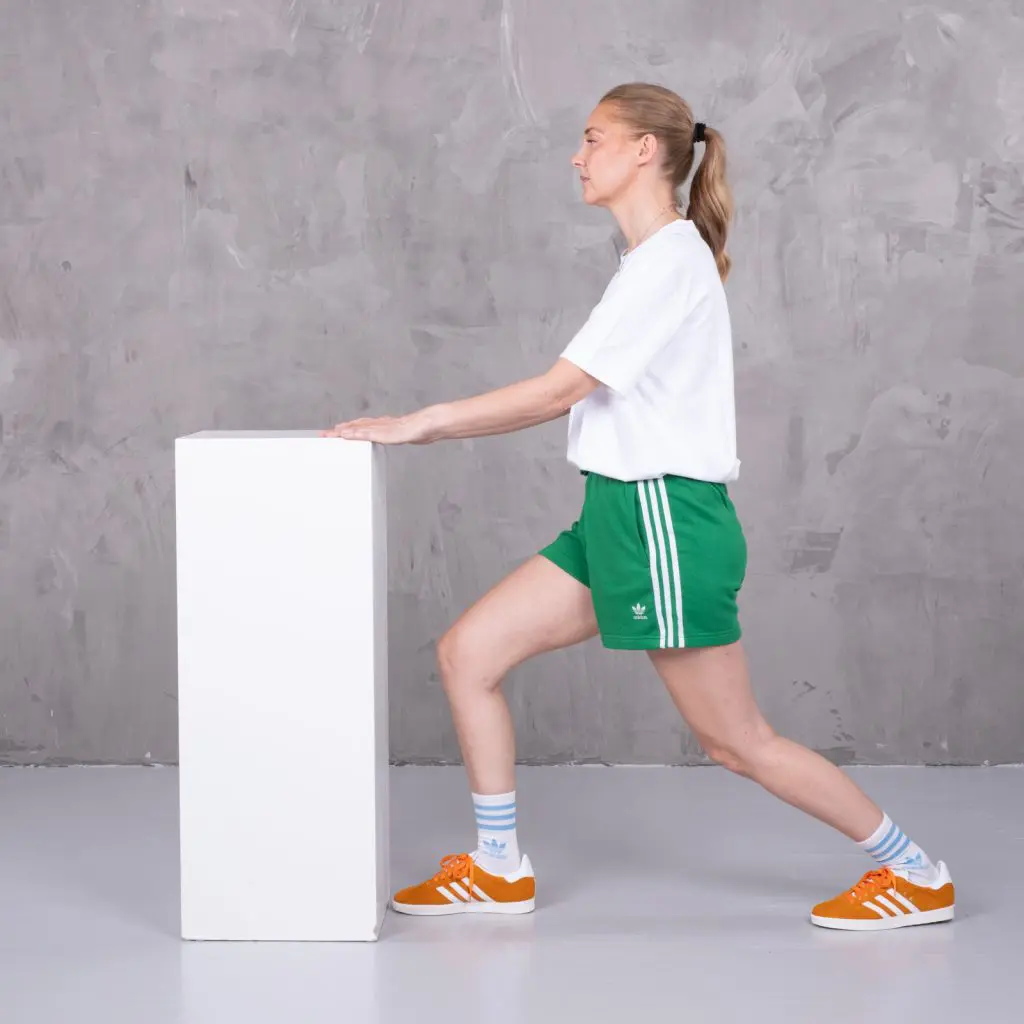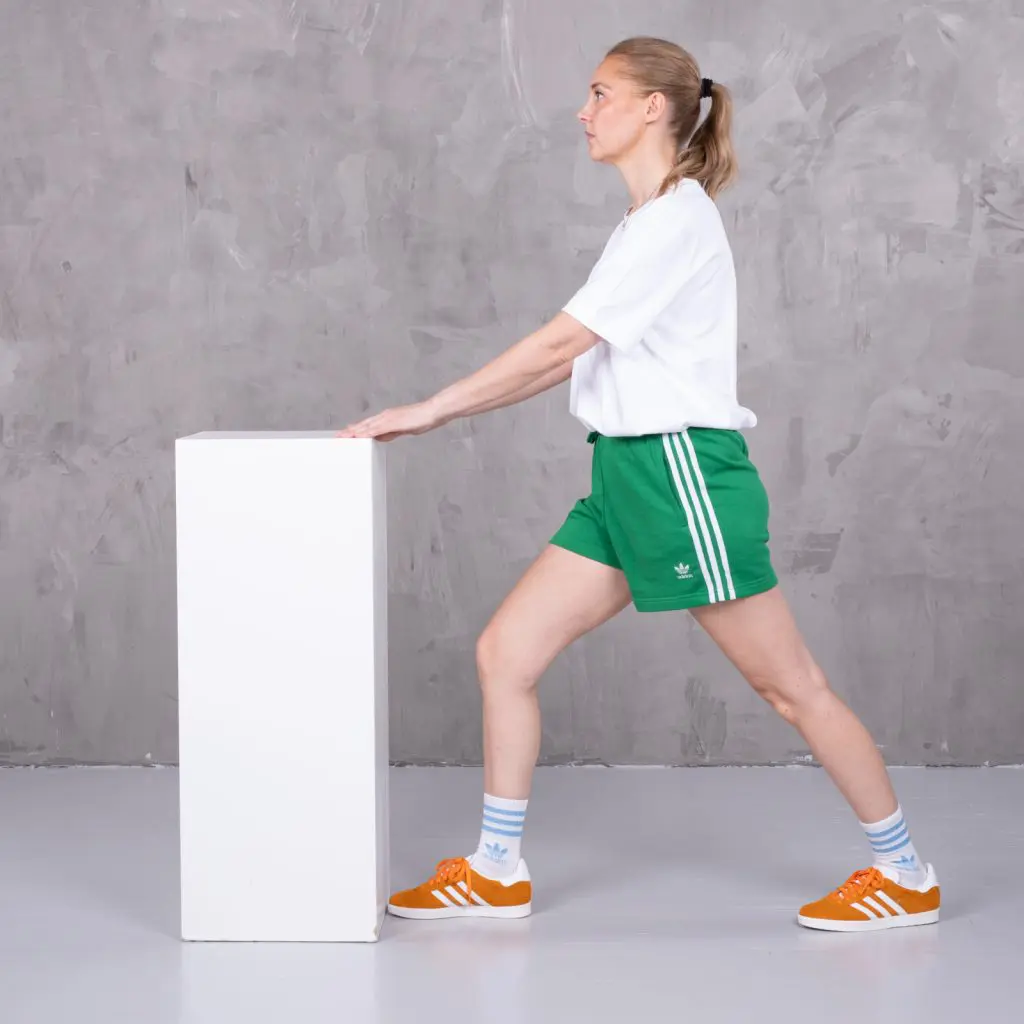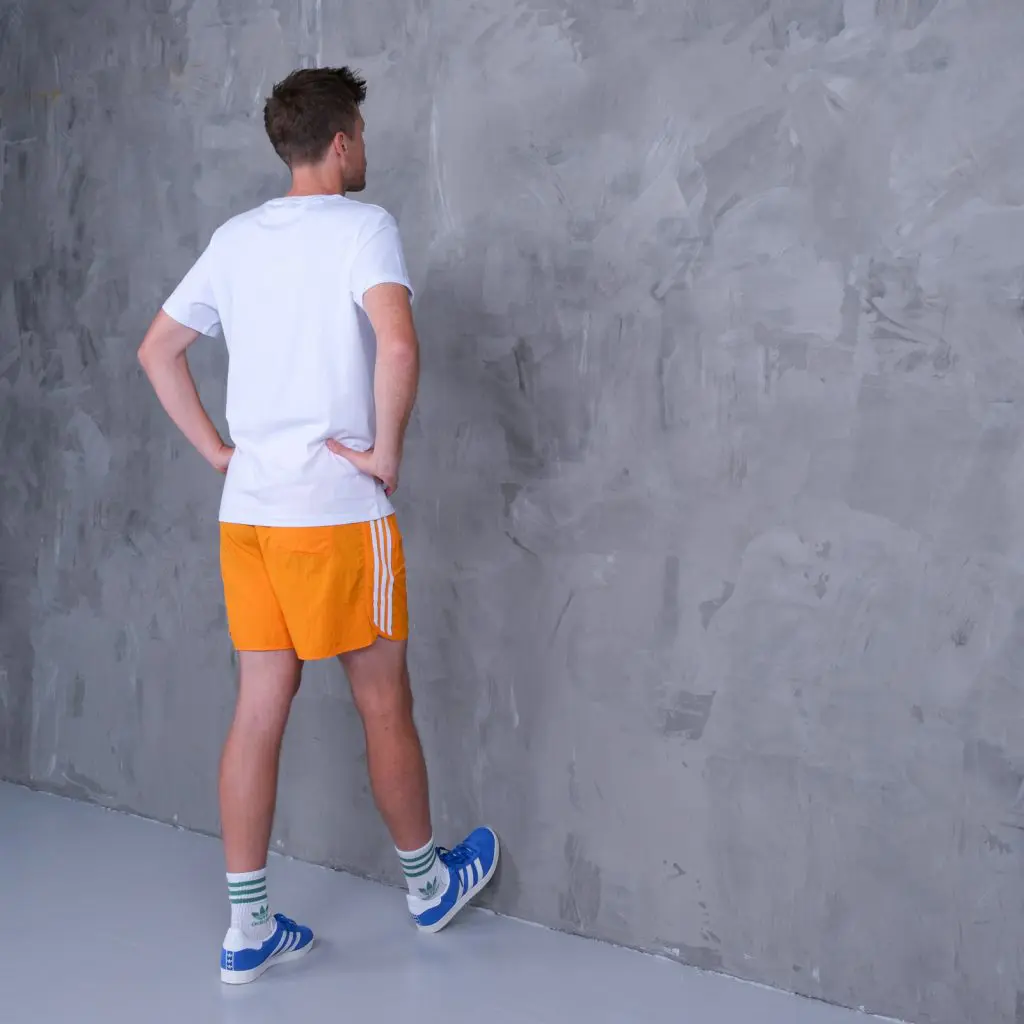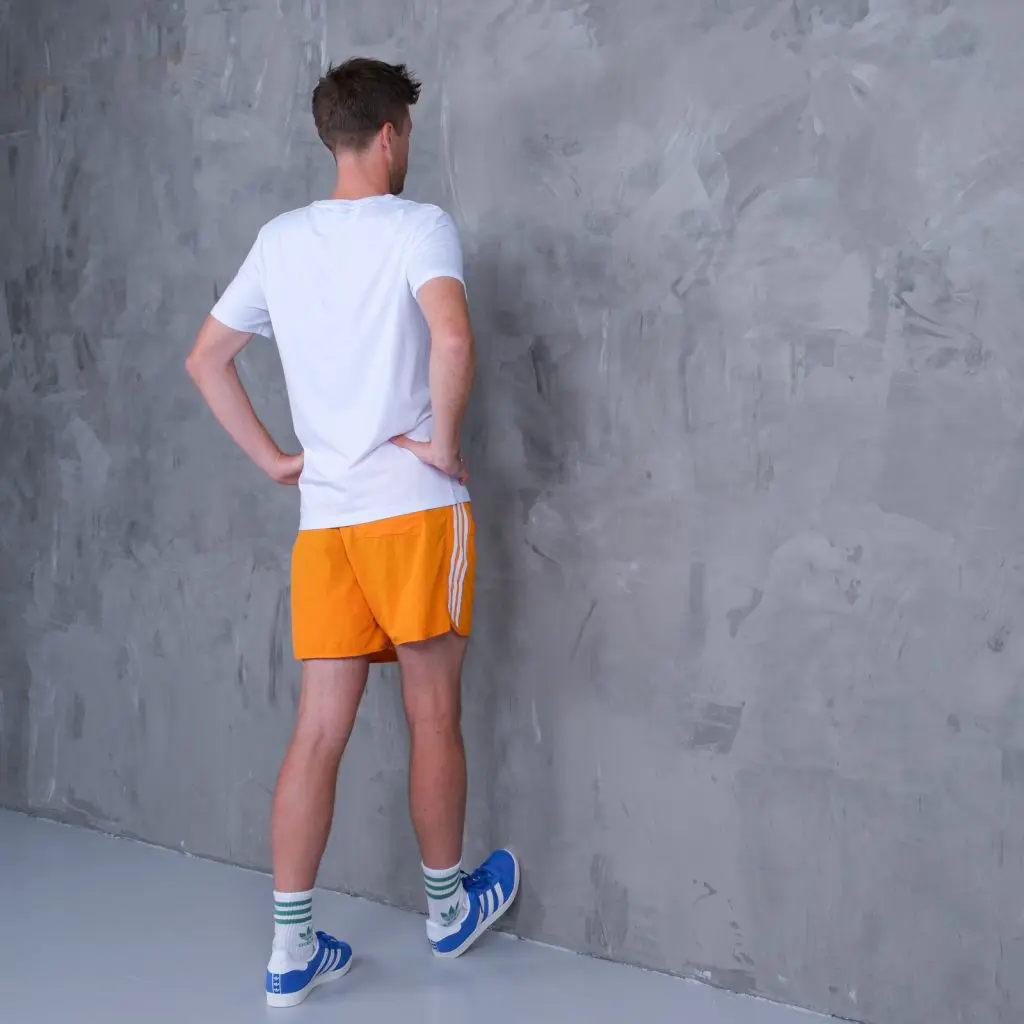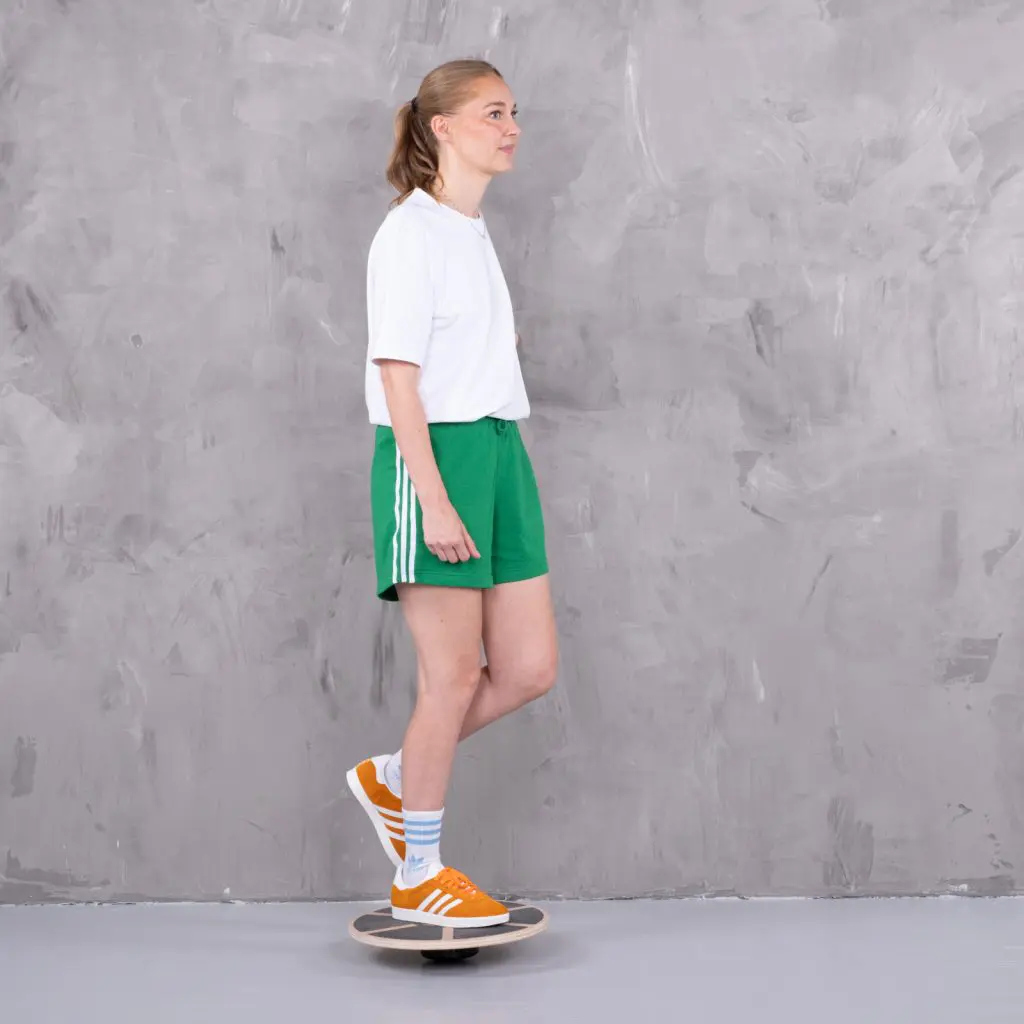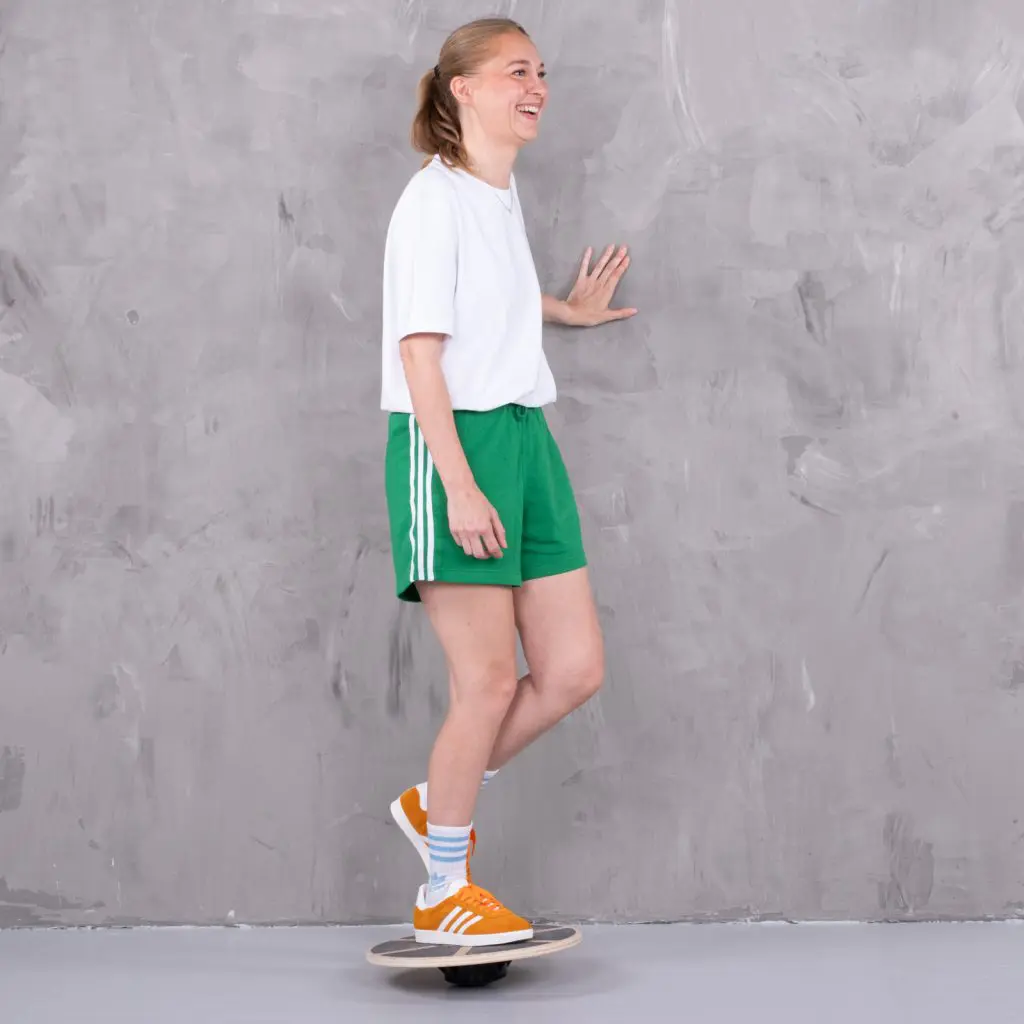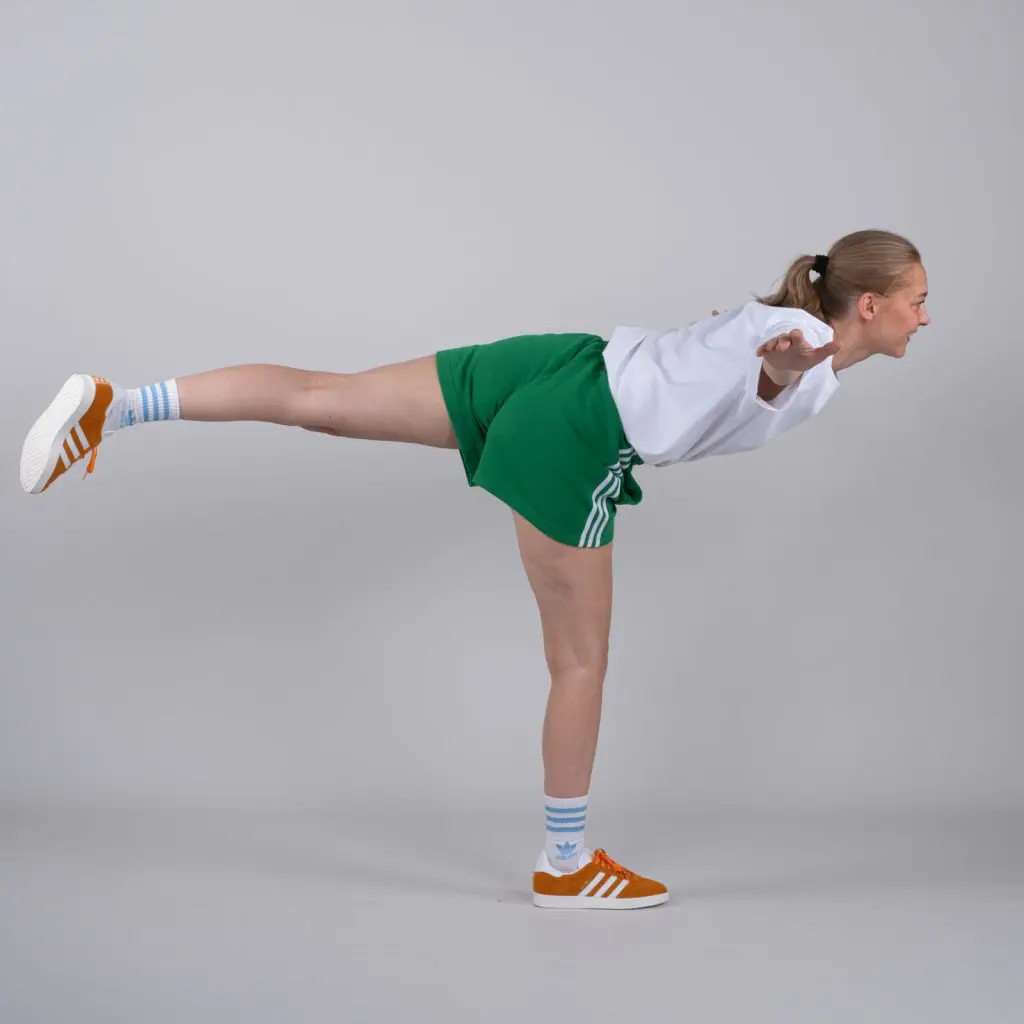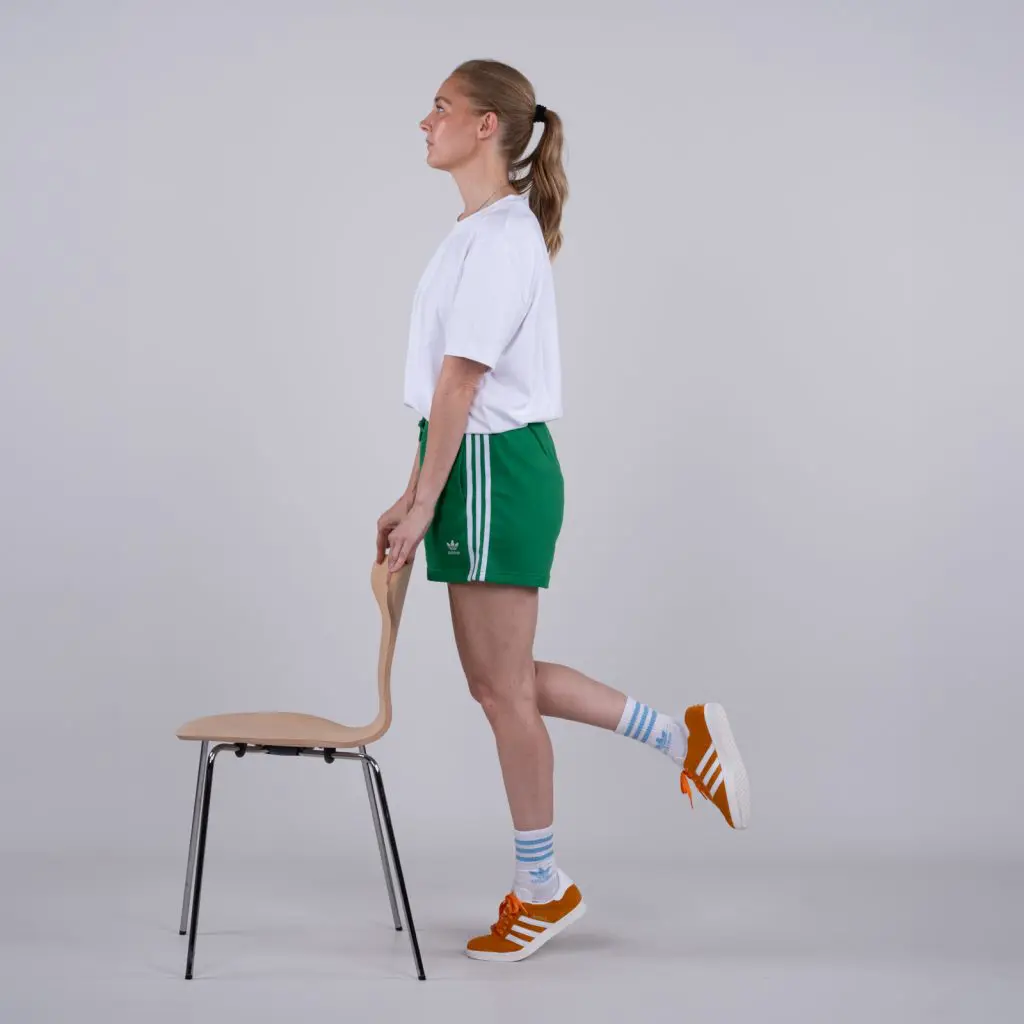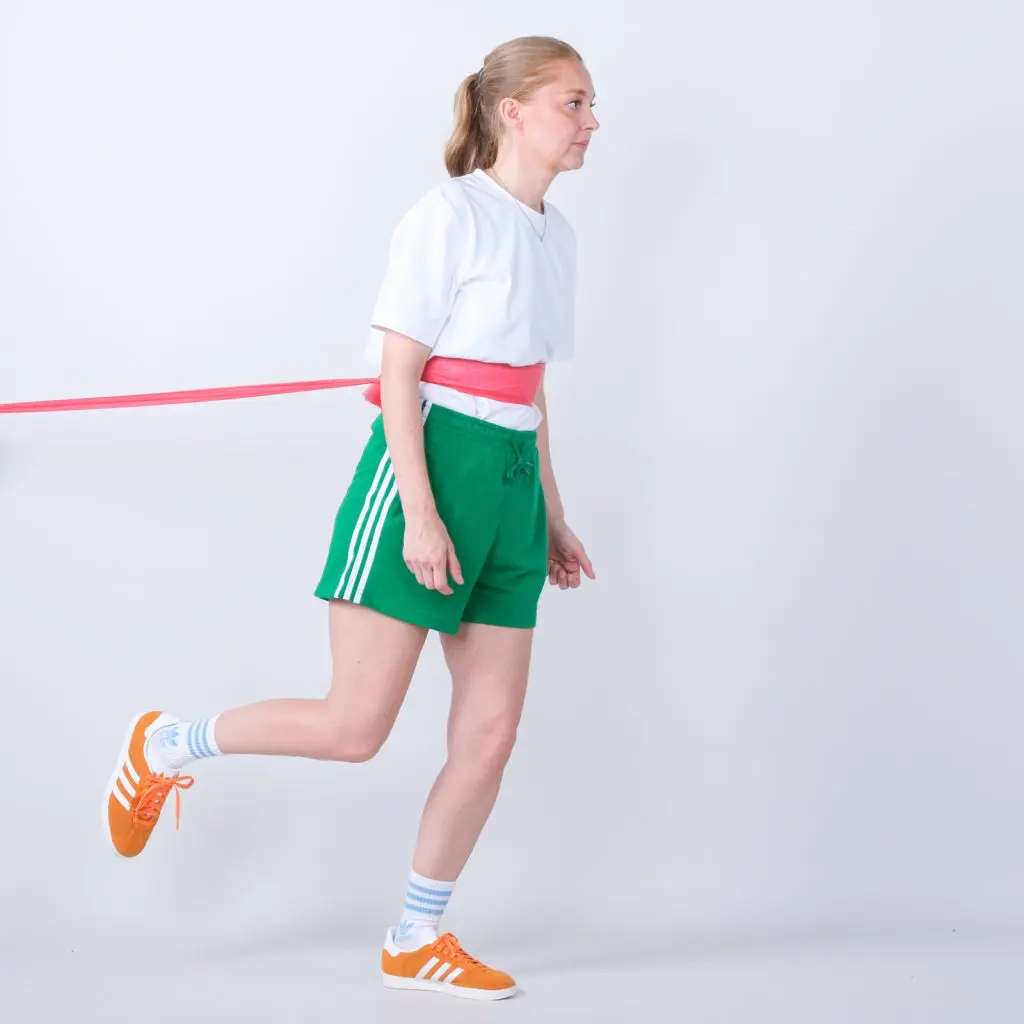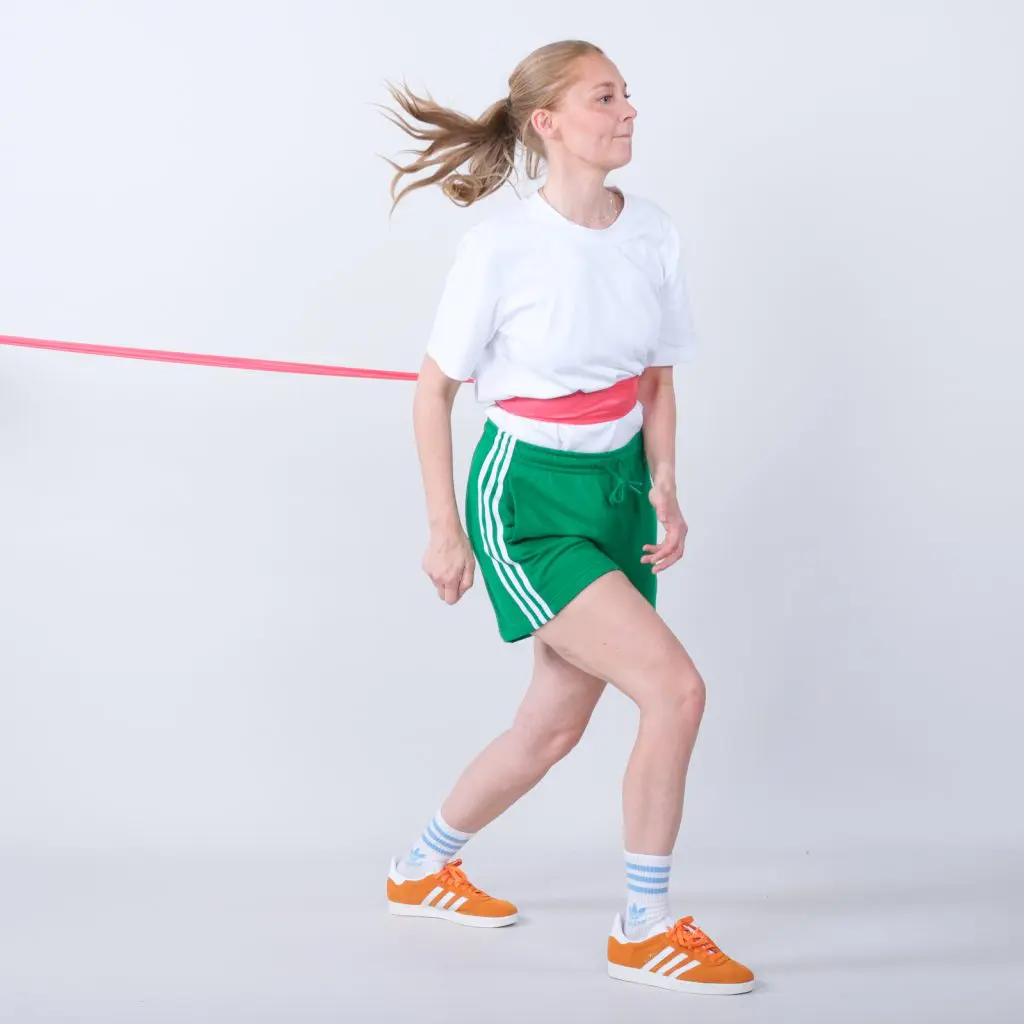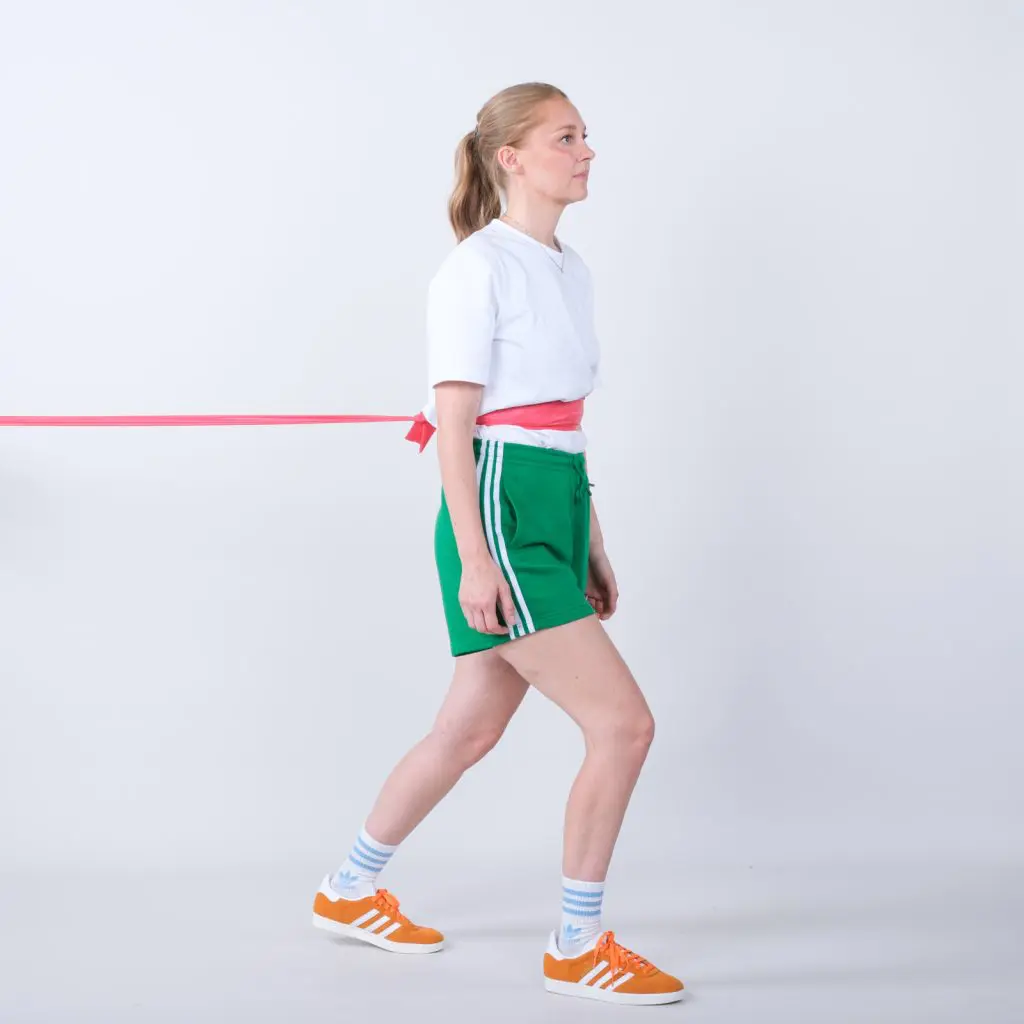This rehabilitation guide for Achilles tendon pain has been developed in collaboration with Rikke Høffner, Postdoc, Sports Physiotherapist, Department of Sports Medicine, Bispebjerg Hospital.
Condition
Unlimited: Cycling, swimming, running with increasing distances on soft surfaces
Stretching
15 min of each training session
Stand in front of a wall with your training leg stretched backwards and your toes pointing forwards to tighten the calf muscle. Hold the stretch for 30 seconds. Slowly bend the knee of the training leg so that the calf muscle becomes increasingly stretched. Hold the stretch for 30 seconds, relax for 10 seconds and repeat the exercise a total of 3 times.
Coordination
5 min of each training session
Stand on the training leg with your knee straight. Bend your body forwards 90 degrees and lift your healthy leg straight backwards. Keep your balance on the training leg. Initially, support yourself with a hand on the wall. When you feel confident, you can make the exercise harder by closing your eyes. The load can be further increased by holding a heavy object in one hand with the hand and arm pointing towards the ground.
Strength
40 min of each training session
Stand with both front feet on the floor. Slowly stand up on your toes with your weight on your healthy leg. Slowly lower yourself down onto the training leg. Use the healthy leg to get back up on your toes. Perform the exercise alternately with the knee stretched and bent. Gradually decrease the number of repetitions with more resistance by putting on a backpack and gradually increase the load in the backpack.
Stand behind a chair and support with your hands on the backrest. Slowly go up on tiptoe on the affected foot. Hold the tension for a few seconds. Go back down again. The load can be increased by putting on a backpack and gradually increasing the load in the backpack. Gradually fewer repetitions with more resistance by putting on a backpack and gradually increasing the ballast in the backpack.

